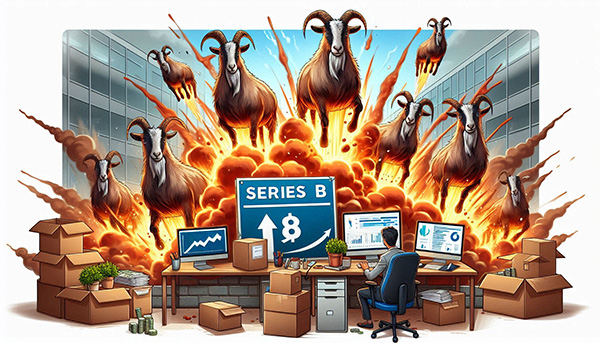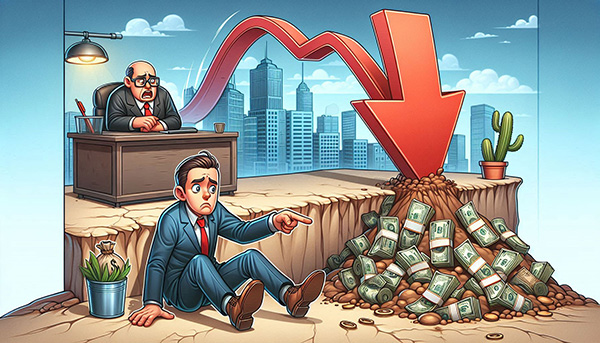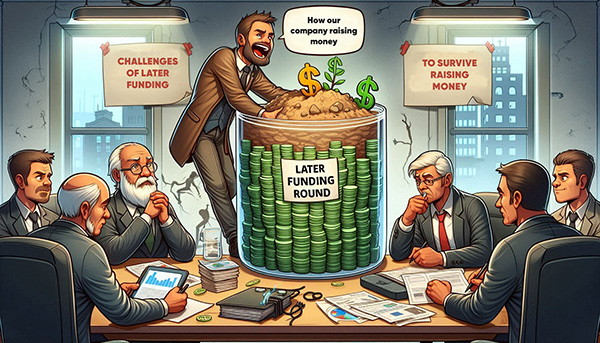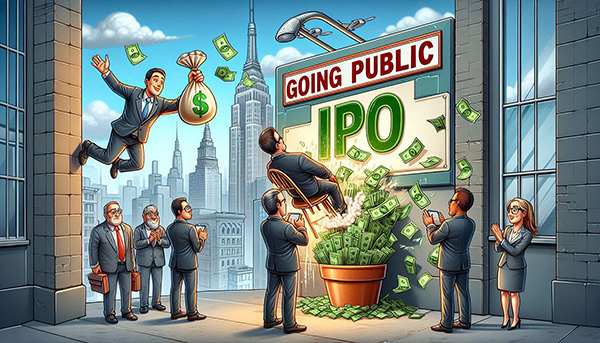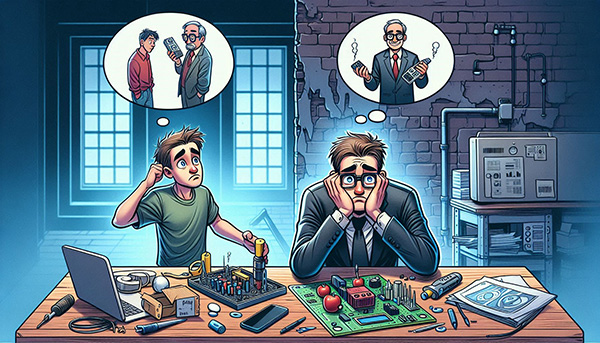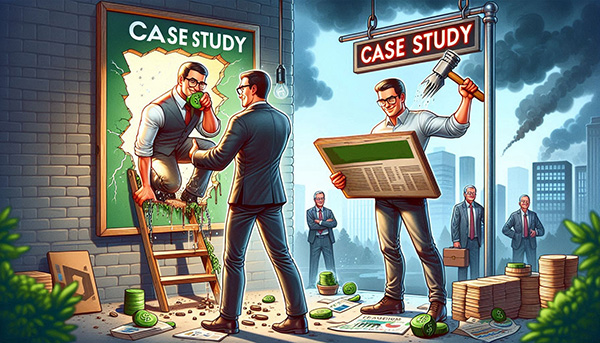By: John S. Morlu II, CPA
Imagine, if you will, a mild-mannered entrepreneur named Bob. Picture him as a cross between a caffeinated squirrel and a Renaissance inventor—an individual brimming with uncontainable enthusiasm and an idea so audacious it makes even the most hyperactive squirrel look reserved. Bob’s brainchild? A company called “ZappityZap“—a marvel of modern technology that manufactures Bluetooth-enabled toasters. Yes, you read that right: toasters with Wi-Fi. While it might sound like something out of a sci-fi novel, this is no ordinary appliance. It’s a sleek, futuristic contraption that can connect to your home network, download updates, and even send you notifications when your toast is perfectly golden. In Bob’s universe, breakfast has evolved into a high-tech adventure.
Fun Fact: The first smart toaster, the “Toasteroid,” was launched in 2018, proving that toasters with a digital brain aren’t entirely fanciful. Bob’s creation, however, takes this concept to a whole new level, integrating technology so advanced it would make your smartphone feel like a vintage rotary dial.
But here’s where Bob’s story starts to resemble a modern fairy tale with a decidedly contemporary twist. Despite his groundbreaking vision and a business plan so intricate it could double as a sleep aid, Bob faces a significant challenge: he’s run out of cash. His grandmother’s penny jar—filled with shiny old coins from an era when dial-up was the pinnacle of technology—isn’t going to fund his toast-tastic dreams.
And so, with a steely gaze and a laptop overflowing with charts and projections, Bob embarks on a journey into the arcane world of Venture Capital (VC). This is no ordinary realm. It’s a mystical land where dreams meet dollars in a symphony of PowerPoint slides, and where venture capitalists wield the power to catapult your startup to the coveted unicorn status—a term used for companies valued at over $1 billion.
Fun Fact: The term “unicorn” was coined by Aileen Lee in 2013 to describe these rare startups that achieve a billion-dollar valuation. Before this term, these high-flying companies were simply labeled “exceptionally successful,” but unicorns sound so much more enchanting, don’t they?
In the world of VC, money seems to grow on trees—or more accurately, on investment pitches. Venture capitalists are akin to financial sorcerers, possessing the ability to transform visionary ideas into gold or, alternatively, to turn your dreams into a disheartening PowerPoint presentation titled “What Went Wrong.”
Bob’s adventure through this enchanted land of high stakes and higher expectations is both exhilarating and perilous. Each funding round feels like a new quest, with increasingly complex challenges designed to test his resolve and his ability to impress these powerful, often elusive financial wizards.
So buckle up and prepare to join Bob on a thrilling odyssey through the realms of seed funding, Series A, B, C, and beyond, where the stakes are sky-high, the jargon is boundless, and the road to success is fraught with as many pitfalls as it is with opportunities.
Chapter 1: The First Round: Seed Funding
“Seed funding?” Bob muses. “Why do they call it that? Is someone planting a garden?”
Bob walks into the office of a VC firm, clutching his pitch deck and nervously rehearsing his elevator pitch in his head. “We’re revolutionizing breakfast!” he mutters to himself as he waits.
The VC, a guy named Chad in a Patagonia vest, waves Bob into his glass-walled office. “Alright, Bob. Let’s talk about seed funding. You’ve got an idea, right? But no revenue, no product, nothing to show except enthusiasm and a logo with some nice fonts?”
Bob nods. He’s right about the fonts.
Chad leans in. “So, here’s the deal. We give you some money—let’s call it $500,000. In return, we take a chunk of your company. No, no, Bob, don’t freak out. It’s only 20%—we’ll keep the rest of your equity warm for future rounds.” Chad chuckles darkly.
Bob doesn’t really understand the math, but Chad seems confident. Seed funding is just the beginning, they tell him. It’s the stage where investors toss a small amount of money into your company like they’re betting on a horse named “Hopeful Disappointment” at the Kentucky Derby.
Chapter 2: Series A: The Real Stuff Begins
Fast forward six months, and Bob has developed a working prototype of the ZappityZap. It toasts, it Bluetooths, and it’s ready for world domination. Or so he thinks. He needs more money to scale the business—enter Series A funding.
This is where things get serious, Bob learns, like getting your first “official” grown-up job. Series A is about “scaling.” It’s when investors aren’t just throwing cash at your idea because you have a cool product; no, now they want to know about “traction,” “unit economics,” and other terrifying things Bob only vaguely remembers from his undergraduate business course, which he mostly slept through.
“Now, we’re talking real money, Bob,” says Chad, leaning back in his ergonomic chair. “We’re gonna give you $5 million to scale this baby up. But in return, we want 25% of your company.”
Bob scratches his head. “But… didn’t you already take 20%?”
“Yes,” Chad says, giving a sly smile, “and after this round, you’ll still have most of your company—technically.”
Bob is pretty sure there’s some voodoo going on, but he needs the cash. And so, Series A it is. He’s now well on his way to becoming a toast-tech magnate.
Chapter 3: Series B: Bigger, Bolder, Broke?
Bob’s business is growing—ZappityZap has sold 500 Bluetooth toasters, and the company is a darling of the “smart kitchen appliance” scene. But Bob is burning through cash like there’s no tomorrow. Suddenly, the office ping-pong table, the kombucha tap in the break room, and his social media manager’s pet yoga goat seem like extravagant decisions.
He calls Chad again. “I think we need another round.”
“Series B,” Chad says, stroking his chin. “It’s the stage where we move from growth to ‘explosive growth.’ You need to scale, scale, scale. You need to hire like you’re staffing a small country. You need marketing, engineers, probably a few extra goats.”
Bob is confused, but he likes the sound of “explosive growth” and more goats. He nods along, only half-listening as Chad talks about valuation.
This is where things get tricky. Series B isn’t just about getting more money—it’s about making sure your company looks good on paper. Your “valuation” is now some astronomical number. Bob hears Chad say something about pre-money and post-money valuation, but Bob’s mind is still on how cool it would be to get those goats.
“How much do you need?” Chad asks.
“I dunno, like $20 million?” Bob says casually. It seems like a lot, but hey, he’s got a Bluetooth toaster empire to build.
And so, with a valuation that would make his grandma’s penny jar explode, ZappityZap is off to the races with Series B funding.
Chapter 4: Series C: Cash, Chaos, and Contemplation
By the time Series C rolls around, Bob is starting to feel a little jaded. He has board meetings now—serious ones. VCs have taken multiple seats at his table, and they keep throwing around terms like liquidation preferences, exit strategies, and synergies.
“You’re in the big leagues now, Bob,” Chad tells him. “Series C is for businesses that are already on the verge of becoming unicorns.”
“Unicorns?” Bob asks, his eyes wide. “Like… the ones with horns?”
“No, no, Bob. Unicorns are companies valued at over $1 billion. Yours is at $800 million after Series B, so we’re almost there.”
Bob should be excited, but something doesn’t feel right. Sure, he’s raised millions of dollars, but every round leaves him with less of his company. Bob is starting to wonder if he’ll ever get to taste the bread his toasters make.
“Don’t worry, Bob,” Chad says, sensing Bob’s unease. “We’ll get you to IPO or a big exit. Then you’ll be rich. And we’ll be richer.”
Bob can’t help but notice Chad’s new yacht in the harbor.
Chapter 5: Series D: The “Uh-Oh” Round
A year later, Bob’s business is thriving—or so he tells everyone at cocktail parties. ZappityZap is in smart kitchen magazines, and his Bluetooth toasters are now connected to a blockchain (for reasons no one fully understands). But behind the scenes, things aren’t so rosy. Revenue? Slim. Customer satisfaction? Let’s just say, toast shouldn’t be this hard.
Bob is also starting to see a disturbing trend—his bank account looks like it’s been looted by pirates, and his company is still not profitable. Naturally, Bob calls Chad.
“Chad, I think we’re in trouble.”
Chad sighs. “Bob, it’s time for Series D.”
Bob frowns. “What happened to Series C? I thought we were gonna be unicorns.”
Chad adjusts his Patagonia vest. “Well, Bob, sometimes you hit a snag. Series D is what we like to call a ‘down round.’ You’re running low on cash, and we’re not hitting that sweet unicorn valuation. But don’t worry. We’re just bringing it down a notch—valuing you lower this time.”
Bob blinks. “Wait. You’re going to value the company lower? But… we’ve grown!”
Chad leans forward. “Yes, Bob, but growth isn’t everything. You see, a down round happens when investors realize you’re not as shiny as they thought. But don’t worry—it’s perfectly normal. Happens all the time. Just a little hit to your equity, nothing to lose sleep over.”
Bob’s eyes widen as he looks at the term sheet. Chad is right—it’s not a “hit.” It’s a plummet. But Bob’s too deep into this VC game to back out now. He nods, signs the paperwork, and hopes Chad is telling the truth when he says the next round will be better.
Meanwhile, Bob hears whispers in the break room: Series D is often called the “do or die round.” It’s the last stop before a company either rockets to profitability or gets swallowed up by a larger competitor. As Bob watches Chad saunter away with yet another cut of the company, he starts to wonder if the end is near for ZappityZap.
Chapter 6: Series Z: The End of the Alphabet, and Bob’s Sanity
At this point, ZappityZap has raised so many rounds that they’re approaching the end of the alphabet. Bob’s cap table looks like a Jackson Pollock painting, and he’s not even sure if he’s still CEO.
“Series Z, Bob,” Chad says with a laugh. “We made it!”
Bob rubs his temples. “I thought there were only supposed to be a few rounds.”
“Yeah, well, you know. Times change. Now you need to raise money just to survive raising money.”
Bob starts to have an existential crisis. He’s been toiling for years, raised hundreds of millions, and yet the company’s profits are still as elusive as a unicorn. Bob wonders, where did it all go wrong? ZappityZap started as a revolutionary toaster company—Bluetooth-enabled, blockchain-integrated, toast-scented artisanal dreams! Now, Bob finds himself with less than 5% ownership of his own company, and his role as CEO feels more ceremonial than anything else.
Chapter 7: The Epiphany: Realizing the Game
As Bob sits in his corner office—now smaller since he had to lease part of the building to cover operating expenses—he reflects on the journey. Series Z has come and gone. The ZappityZap empire has become a Frankenstein’s monster of “strategic pivots,” VC buzzwords, and rounds of funding with more terms than a legal dictionary.
Bob no longer recognizes his own creation. The VCs are happy though—very happy. They have taken the company public with an IPO, just as Chad promised, and the exit strategy is underway. Chad, with his Patagonia vest now made from hand-spun cashmere, explains that Bob should be thrilled.
“You see, Bob, it’s all about the exit. The public offering is a huge success! We sold shares at $20 each, and the market went wild. You, my friend, are officially a millionaire.”
Bob blinks. “But I only have 2% of the company now… Is that enough to buy a yacht?”
Chad chuckles, giving Bob a paternal pat on the back. “Well, maybe a small yacht. But don’t worry—it’s the journey that counts, right?”
Chapter 8: The Terms of Endearment (or Confusion)
In the days following the IPO, Bob gets inundated with new jargon. He thought liquidation meant turning his company into cold, hard cash, but now he’s hearing about lock-up periods—a time where he can’t even sell his shares. The VCs, of course, have already cashed out, sitting on piles of gold like dragons in a fantasy novel. Bob, on the other hand, finds himself wondering if his 2% will be worth anything by the time he’s allowed to sell.
And then there’s the board seats. Bob is still nominally the CEO, but his real power was siphoned away over the course of those funding rounds. Chad and his VC cronies now control the majority of the board. They talk about “vision” and “long-term strategy,” but Bob notices they mostly talk about things like acquisition or merger potential—terms that leave him cold.
Chapter 9: The Final Round: Existential Crisis
Bob, once a wide-eyed optimist, is now a grizzled veteran of the venture capital machine. He’s made it through Seed, Series A, B, C, D, and Z, and while his company is technically a success, it’s not the dream he started with.
He misses the early days when he could spend hours tinkering with toaster designs and imagining the future of breakfast technology. Now, he spends his days reviewing term sheets, liquidation preferences, and board meeting minutes that might as well be written in an alien language.
Bob learns that in the world of venture capital, raising money is like running on a treadmill. At first, it’s exciting—you’re moving forward, the adrenaline is pumping, and it feels like you’re making progress. But as the rounds go on, the treadmill speeds up, and you find yourself running just to stay in place. The exit strategy Chad always talked about feels more like an exit from sanity.
Chapter 10: The Lesson: Be Careful What You Wish For
In the end, Bob’s journey through the rounds of venture capital is a cautionary tale. Sure, ZappityZap is a publicly traded unicorn, but at what cost? His company has become a case study in how venture capitalists can strip a founder of their vision, equity, and soul. Bob has wealth now, but no control. He has fame, but no satisfaction. His Bluetooth-enabled, blockchain-integrated toasters are in homes around the world, but they no longer feel like his creation.
“Chad,” Bob says one day, staring wistfully out the window, “was it worth it?”
Chad, who is now sipping champagne on his yacht, flashes a pearly grin. “Of course it was, Bob. For me, anyway.”
And so, the tale of Bob and ZappityZap ends—not with a bang, but with a quiet resignation. In the world of venture capital, the journey may be thrilling, but the destination is often bittersweet. As Bob contemplates his future, he realizes that the real exit strategy might just be finding a way to reclaim his passion for breakfast technology without getting swallowed whole by the venture capital machine.
Maybe one day, Bob will invent the next big thing—perhaps a Wi-Fi-connected blender or a blockchain air fryer—but this time, he’ll think twice before entering the world of “rounds,” “term sheets,” and the never-ending chase for more funding. Lesson learned, Bob. Lesson learned.
Author: John S. Morlu II, CPA is the CEO and Chief Strategist of JS Morlu, leads a globally recognized public accounting and management consultancy firm. Under his visionary leadership, JS Morlu has become a pioneer in developing cutting-edge technologies across B2B, B2C, P2P, and B2G verticals. The firm’s groundbreaking innovations include AI-powered reconciliation software (ReckSoft.com) and advanced cloud accounting solutions (FinovatePro.com), setting new industry standards for efficiency, accuracy, and technological excellence.
JS Morlu LLC is a top-tier accounting firm based in Woodbridge, Virginia, with a team of highly experienced and qualified CPAs and business advisors. We are dedicated to providing comprehensive accounting, tax, and business advisory services to clients throughout the Washington, D.C. Metro Area and the surrounding regions. With over a decade of experience, we have cultivated a deep understanding of our clients’ needs and aspirations. We recognize that our clients seek more than just value-added accounting services; they seek a trusted partner who can guide them towards achieving their business goals and personal financial well-being.
Talk to us || What our clients says about us




